
10 Best 3D Slicer Software 2023 (6 Are Free!)


At 3DSourced we’ve covered everything 3D printing and 3D since 2017. Our team has interviewed the most innovative 3D printing experts, tested and reviewed more than 20 of the most popular 3D printers and 3D scanners to give our honest recommendations, and written more than 500 3D printing guides over the last 5 years.
If you want to make sure your prints come out looking perfect, you’ll need to make sure you have the right 3D slicer to send your models from.
The best 3D slicer for the majority of users is going to be Cura. This free, open-source software is user friendly and has all essential features you’ll need, making it the best choice for hobbyists and intermediate printers.
If you’re an experienced maker you may benefit from the wider range of advanced settings available in Simplify3D – but comes at a cost of $150 for use on two computers.
Over the past 2 – 3 years I’ve tested pretty much every slicer out there – and have discovered that they’re not all created equal.
In this guide I’ll be comparing the best 3D slicers I’ve used over all the important factors – functionality, ease of use, device compatibility, and many more crucial hidden details.
So let’s work out which 3D slicer is best for you.
Note: this article focuses on 3D slicers for FDM printing. For resin 3D printing, check out our guide to the best resin 3D slicers
Best 3D Printer Slicers for Effective 3D Printing
| Name | Free or Paid | Open source? | Where to download? |
|---|---|---|---|
| Cura | Free | Yes | Here |
| Simplify3D | Paid ($150) | No | Here |
| Slic3r | Free | Yes | Here |
| KISSlicer | Paid with free option | No | Here |
| Tinkerine Suite | Free | No | Here |
| PrusaSlicer | Free | Yes | Here |
| Repetier | Free | No | Here |
| OctoPrint | Free | Yes | Here |
| SelfCAD | Paid with free option | No | Here |
What Should You Look for in a Good 3D Slicer?
That’s what this guide will help you find out — we haven’t just listed a group of 3D printer slicers we thought were good, but created a list of slicers which are the best in each area – for example the best free 3D slicer, or best 3D slicer for education in schools.

A 3D slicer is a 3D printer software program that you can import models into — for example in .STL, .GCODE or .OBJ file format. These 3D printer models form the basis of your print; they contain the edges, heights, and all the information about your print.
To be considered one of the best 3D slicers, a slicer should offer:
- Speed: Any great 3D slicer should save you time by importing STL files (or any other 3D printer file) in record time, no matter how large or complex the model is.
- Repairing and warning features: An advanced 3D printer slicer will alert you if your file there are glaring errors in your file that could cause errors in your print, and fix them for you if necessary. This saves you time in preventing wasteful failed prints, and money in wasted 3D printer filament.
- Easy to use: There is no point in having infinitely advanced slicing tools (or any other great features) if nobody can find them, or work out how to use them. The interface should be simple and easy to learn, with appropriate guides for professional 3D slicing tools.
- 3D printing data: Most good slicers now, during printing, inform you of the expected remaining time, and how much required filament remains (so you can estimate if you have enough left).
- 3D slicer price: many tools are free, and even open source, so if a program if paid, it needs to offer notable advantages of its free slicer peers.
- Good slicer supports: one of the main advantages of a good 3D slicer is automatically generated supports that make sure your finished print is as precise and accurate as possible, especially over bridges and wide-angle 3D printing.
The Best 3D Slicers for Hobbyist & Prosumer 3D printing
Cura Slicer — Best Free 3D Slicer Software
- 3D printer software price: Free!
- Download here
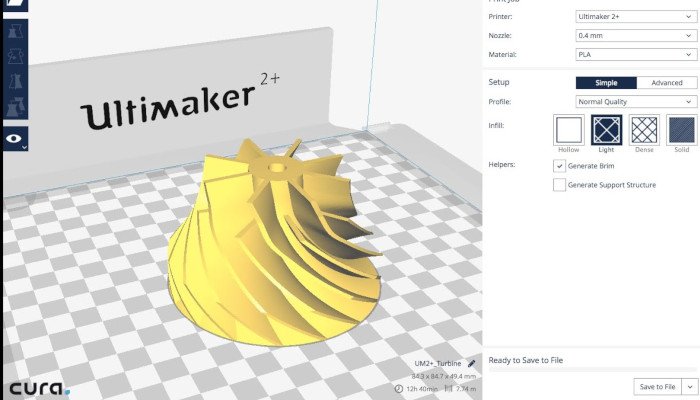
Pros
Open-source.
Integrates with popular 3D CAD software tools like SolidWorks and Autodesk.
Specialized settings for Ultimaker and other 3D printers.
Cons
Expensive advanced version.
Developed by Dutch 3D printer manufacturer Ultimaker, Cura is the most popular 3D slicing software out there. This 3D slicer is free open-source software, and is designed to be able to integrate with 3D CAD software tools like SolidWorks and Autodesk Inventor for easier cross-platform workflow.
Since it’s made by Ultimaker, Cura is perfect for Ultimaker 3D printer owners, as well as featuring specialized settings for dozens of other printers too.
It also has recommended settings for beginners, so those without much experience will still find it useful.
Beyond this, a number of advanced settings for supports and infills make Cura a viable 3D printer slicer for advanced users, too.
Most impressive however is its simple yet effective three stages of printing:
- Prepare: the first stage, Prepare, allows you to choose your printing parameters and slice the 3D printer model.
- Preview: the Preview stage identifies possible at-risk areas which could fail. This helps identify faults without having to waste time, materials and energy making those mistakes in real life.
- Monitor: this final stage lets you monitor your print’s progress, which you can also do remotely.
Massive quality-of-life improving features in Cura include the estimated time of print and an estimated amount of filament required for a certain print.
This is incredibly useful, for example, if you are running short of filament and want to make sure you’ll be able to finish that 3D printed miniature rather than running out of filament while your model is headless, or if you’re in a rush and need to finish printing before a certain time.
For those new to 3D printing, this handy tutorial covers the basics of printing parameters and more:
Reliable budget 3D printer options:
| Name | Build Volume (mm) | Price | Best price available at: | Alternative purchase option |
|---|---|---|---|---|
| Creality Ender 3 V2 | 220 x 220 x 250 | $279 | Amazon here | 3DJake UK & Europe |
| Creality Ender 5 Pro | 220 x 220 x 300 | $399 | Amazon here | 3DJake UK & Europe |
| Monoprice Voxel | 150 x 150 x 150 | $449 | Amazon here | |
| Creality CR-10 V3 | 300 x 300 x 400 | $529 | Amazon here | 3DJake UK & Europe |
| Qidi Tech X-Pro | 230 x 150 x 150 | $469 | Amazon here | 3DJake UK & Europe |
Simplify3D — Best 3D Slicer For Experienced Makers
- 3D printer software price: $149
- Available here

Pros
Said to be compatible with more 3D printers than any other software.
Used by both novice and experienced makers.
You can effectively customize your support thickness and material.
Cons
Costs $150 for use on two computers.
Undoubtedly up there as the most expansive and technical option, Simplify3D is said to be compatible with more 3D printers than any other 3D printer software. The slicing tool is used in education, as well as by both novice and experienced makers and by businesses for rapid prototyping and iterating.
The caveat is the price — $150 for use on two computers. The price tag comes with a number of key benefits, however. For example, Simplify3D excels in an area where most 3D slicers struggle — in supports.
You can effectively customize your support thickness and material, and Simplify3D builds them so they can be removed extremely easily. This saves time and leads to parts with a better surface finish as they’re less likely to be scarred during post-processing.
Simplify3D features very precise and advanced settings for extruders, infill 3D printing settings, extruder temperatures, cooling and fans, rafts and brims, retraction, and especially supports. If you have already spent several hundred dollars on a 3D printer, it may be worth considering a paid 3D slicer as an investment in fulfilling your 3D printing potential with the most advanced 3D printer slicer on the market.
It also excels in pre-print simulations and shows potential weak points that could cause the print to fail. This feature can potentially save hundreds of dollars in wasted filament from failed prints, using Simplify3D’s advanced tools to pinpoint and fix errors.
Slic3r — Best Open Source 3D Slicer
- 3D printer software price: Free!
- Available here

Pros
Open-source.
Slic3r is a nonprofit project.
Wide variety of features for advanced users.
Cons
Does not have full-time dedicated support and developers.
Slic3r is a 3D slicer first started back in 2011 by Alessandro Ranellucci and champions the open source philosophy alongside RepRap 3D printers. It’s a completely nonprofit project, which is very commendable considering it is definitely one of the best 3D printer slicer options out there.
With a wide variety of features that advanced users will enjoy, including effective, strong infills and many different preview views for ensuring you’re happy with your model before you press print, Slic3r is versatile enough to handle almost anything you throw at it.
Slic3r can handle printing on multi extruder 3D printers with different support materials, and can even print on multiple 3D printers simultaneously. It can import STL, AMF and OBJ files, and exports GCODE files for 3D printing. What’s more, Slic3r integrates seamlessly with OctoPrint, a 3D printer host program for remote 3D printing and monitoring.
What’s more, it doesn’t just deal with FDM 3D printers, but can also print SLA prints, so resin 3D printer owners can also use Slic3r for their prints.
Some more premium 3D printer options:
| Name | Build Volume (mm) | Price | Best price available at: | Alternative purchase option: |
|---|---|---|---|---|
| Flashforge Creator Pro 2 | 200 x 148 x 150 | $899 | Amazon here | |
| Dremel Digilab 3D45 | 254 x 154 x 170 | $1,899 | Dynamism Store here | Matterhackers here |
| Raise3D Pro2 | 305 x 305 x 300 | $3,999 | Dynamism Store here | Matterhackers here |
| Ultimaker S5 | 330 x 240 x 300 | $5,995 | Dynamism Store here |
KISSlicer
- 3D printer software price: Free version, with $42 PRO version and $82 Premium version
- Available here

Pros
Detail-oriented, focusing on the technical aspects of 3D printing.
Access to content and updates within the free version.
Cons
The interface is not beginner friendly.
The dual extruder will cost you $42.
KISSlicer — or Keep It Simple Slicer — is a great 3D slicer for experts. The software is very detail oriented and focuses on technical aspects of 3D printing that experienced makers will be drawn to.
The free version of KISSlicer is limited to single extruder 3D printing, and unlocking dual extruder 3D printer options will cost you $42. There’s also a Premium $82 option with more advanced tools, such as the ability to combine multiple STL files into one print.
Even if you only have the free version you still have access to all the content and updates, with new types of 3D printer, print styles, mesh topologies, and 3D printer filaments being added all the time.
Some will not enjoy the less beginner-friendly interface however.
Tinkerine Suite — Best 3D Slicer For Education / Schools / Beginners
- 3D printer software cost: Free!
- Available here

Pros
Easy to use.
Perfect for classroom use.
Immersive learning experience.
Features accurate estimates of how long a print will take.
Cons
Not great for an experienced user.
Tinkerine is a Canadian 3D printer manufacturer that specializes in 3D printers for education, and their Tinkerine Suite 3D slicer is built for education too.
That means Tinkerine Suite is super easy to understand and use, even if you’re not good with computers or haven’t done much 3D printing before. This makes it perfect for use in classrooms where younger children may not have much experience with technology, with the simple UX making learning Tinkerine Suite a breeze.
Moreover, alongside the printing parameters, there are tips that explain how changing each setting will affect the print. This helps students to learn as they tinker with their models — learning through doing, an immersive learning experience. Tinkerine Suite also features accurate estimates of how long a print will take, which is very useful when factoring in lesson plans of a certain length. Overall, it’s the perfect 3D slicer for education.
Prusa Slicer — Best 3D Printer Software For Prusa Printer Owners
- 3D printer software price: Free! — Download here
- Available here

Pros
Great for Prusa printers but can be used by many different 3D printers as well.
Can handle over 60 different filaments and resins.
Open-source.
Cons
No option to smart hide seams in models.
Anyone who has ever owned a DIY 3D printer kit will know just how good Prusa 3D printers are, and having forked Slic3r’s open-source 3D printer software, Prusa Slicer is specially designed for Prusa printers. So for those who either bought or built their own Prusa printer, the Prusa Slicer is optimized for you.
- You can also buy the original Prusa kit on the Prusa Store here.
- Prusa SL1 resin printer is available here.
Despite being aimed towards Prusa users, it’s a versatile 3D slicer that can handle many different printers and over 60 different 3D printer filaments and resins. It’s also updated to include SLA/DLP/LCD printing, so if you’ve bought the new Prusa SL1 resin 3D printer, it works with that too.
It’s also open source, so anyone with the skills and the time to develop new tools and features can improve PrusaSlicer for the whole community. The time estimates are known for their accuracy, especially on Prusa printers, and any Prusa 3D printer owner will tell you it’s a great 3D printer slicer.
Repetier-Host — Great 3D Slicer For Remote 3D Printing
- 3D printer software price: Free!
- Available here
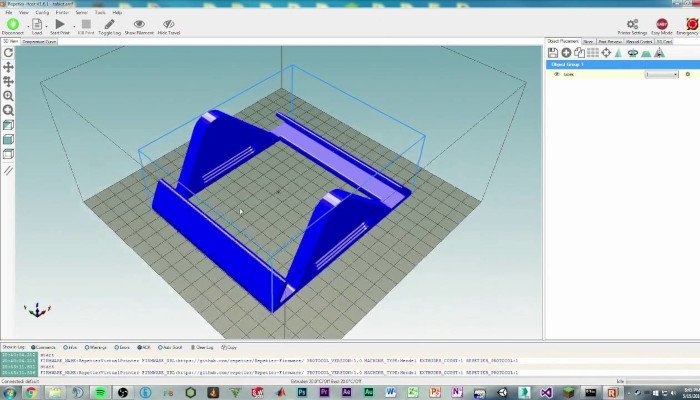
Pros
Easy to import 3D models and then rotate, scale or move them however you need.
A suite of tools to complement the slicer.
Easily print via USB or SD card, or directly to your computer.
Cons
Not good for beginners.
Repetier is a free 3D slicer that allows you to easily import your 3D models and then rotate, scale or move them however you need to before 3D printing them.
Repetier doesn’t just make a 3D slicer, but have a suite of tools that complement the slicer, such as Repetier-Server which helps with remote 3D printing and monitoring prints.
It works like OctoPrint, installed on a Rasbperry Pi so you can remotely access your prints via a laptop or smartphone. If you just want to use Repetier as a 3D slicer, you can still easily print via USB or SD card, or directly to your 3D printer. It’s not used as commonly as others like Cura, but it’s still a good free 3D printer software option.
If you’re a manufacturer and looking for a good 3D slicer to use for your 3D printers, Repetier also offers a branded option so you can have your own custom version. You get your own branding and digital signature, as well as all Repetier’s custom print settings and filament settings to reduce time spent answering your customers’ questions.
OctoPrint — 3D printer host for remote printing & also a 3D printer slicer
- Price: Free!
- Available here

Pros
Can monitor your print’s progress, temperature, and estimated remaining time.
Can remotely pause or stop the print.
Cons
Not a specialized 3D slicer.
Although not a specialized 3D slicer, OctoPrint does feature a slicing tool for slicing STL files in addition to its incredible main features. OctoPrint acts as more of a slicing software platform and host, allowing for simple and effective remote monitoring of in-progress printing, so you could be in a different city and seamlessly check on how your 3D print is going.
You can monitor your print’s progress, temperature, estimated remaining time, and install a webcam to get video footage of the print to check if any errors have occurred. And if they have, you can remotely pause or stop the print to save on wasted filament!
SelfCAD
- Price: $14.99/month but with big discounts if used in education, and with a free version

Pros
Browser-based as well as downloadable versions.
Easy to use.
A popular choice for schools.
Cons
Can only make simple designs.
SelfCAD combines artistic, technical, and 3D printing features under one 3D modeling software tool, and while being easy to navigate is designed for all levels of skill — from beginner to professional. A standout feature is that it’s a completely cloud-based 3D slicer; there are no downloads and you need just an internet connection to connect and edit your STL files.
Obviously, this also means you won’t be able to access your models if your internet goes down, or if you’re on the move to a place with no internet. But in 2022 this is becoming a rarity.
It’s easy to adjust print quality, infill, supports and materials for your preferred print settings. SelfCAD also has presets for most FDM 3D printers, so unless you’ve got a very obscure machine they should have you covered.
Netfabb — professional 3D slicer for metal 3D printing
- Price: $387 per month
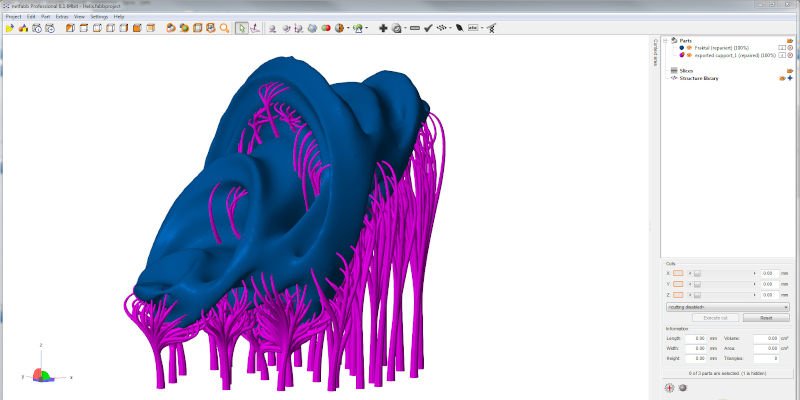
Pros
Advanced 3D slicing.
Can analyze and repair files based on any predicted difficulties.
Can easily create lattice structures that save weight.
Cons
Can be slow at times.
Netfabb is an advanced 3D slicing and 3D file preparation software now acquired by Autodesk and used to complement their Fusion 360 software. It’s specialized for 3D file analysis, with some very advanced extras.
First, it not only prepares and slices 3D models, but can also analyze and repair files based on any predicted difficulties that could come up during the printing process based on Netfabb’s analysis of the file.
With Netfabb, you can easily create lattice structures that save weight, and it can powerfully simulate DMLS, other powder bed fusion prints, DED, and more, to check for part distortion, areas that will come under too much strain during the printing process, and find areas that may not fuse properly. Metal 3D printing is expensive, so preventing these errors will save huge amounts of money over time.
Other articles you may be interested in:




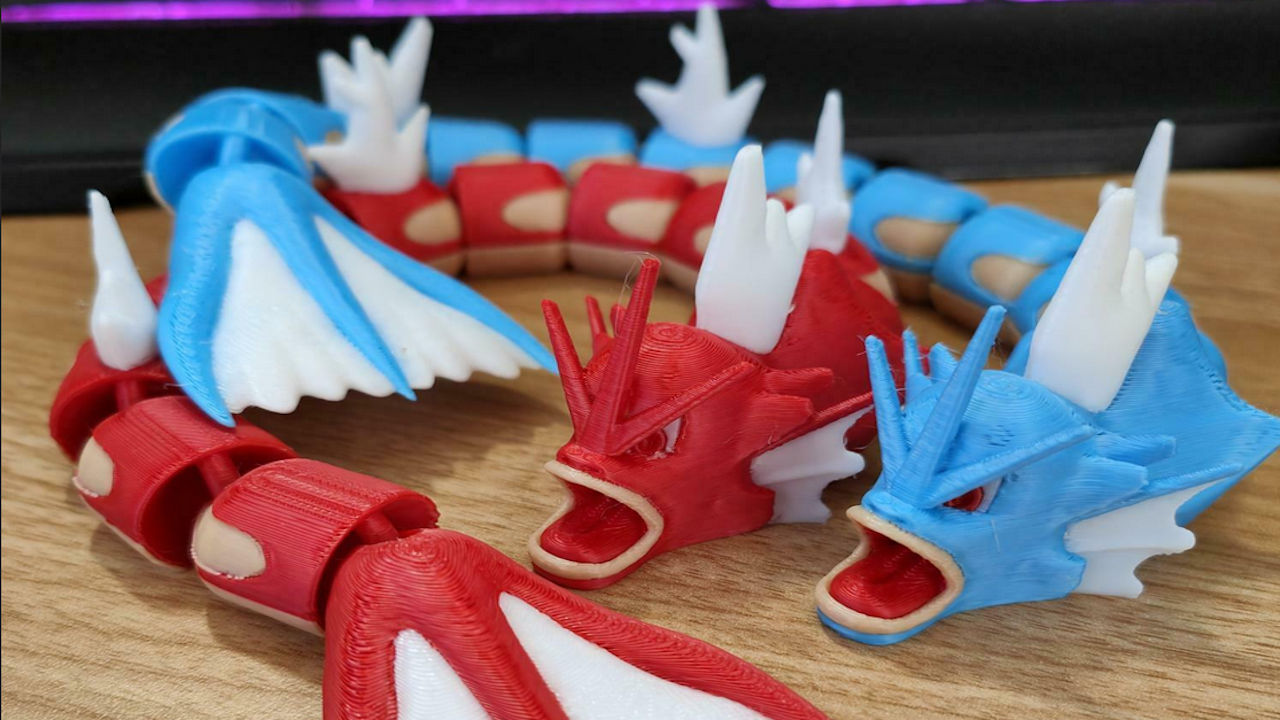







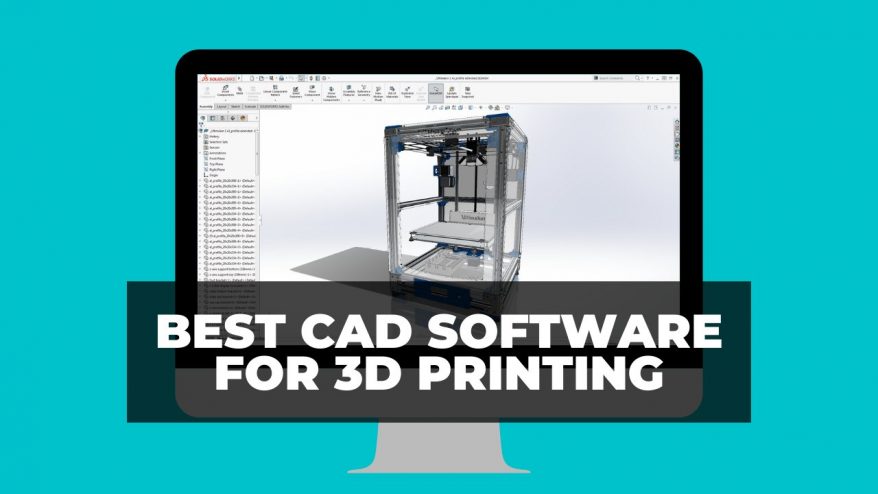







Great article. I was hoping you would include Kiri (https://grid.space/kiri) in the next update. It’s free, open source, and mature (5 years old).
Several things set Kiri apart. First, it runs entirely in browser with no dependence on the cloud or servers. There is nothing to install. It loads instantly and is ready to use. Second, it has several operating modes including CNC gcode generation and laser cutting output. Third, because it’s browser-native, it’s directly integrated into Onshape and Thingiverse.
Kiri has several thousand active users, but has largely stayed under the radar. It is under active development. New features and bug fixes roll out continuously.